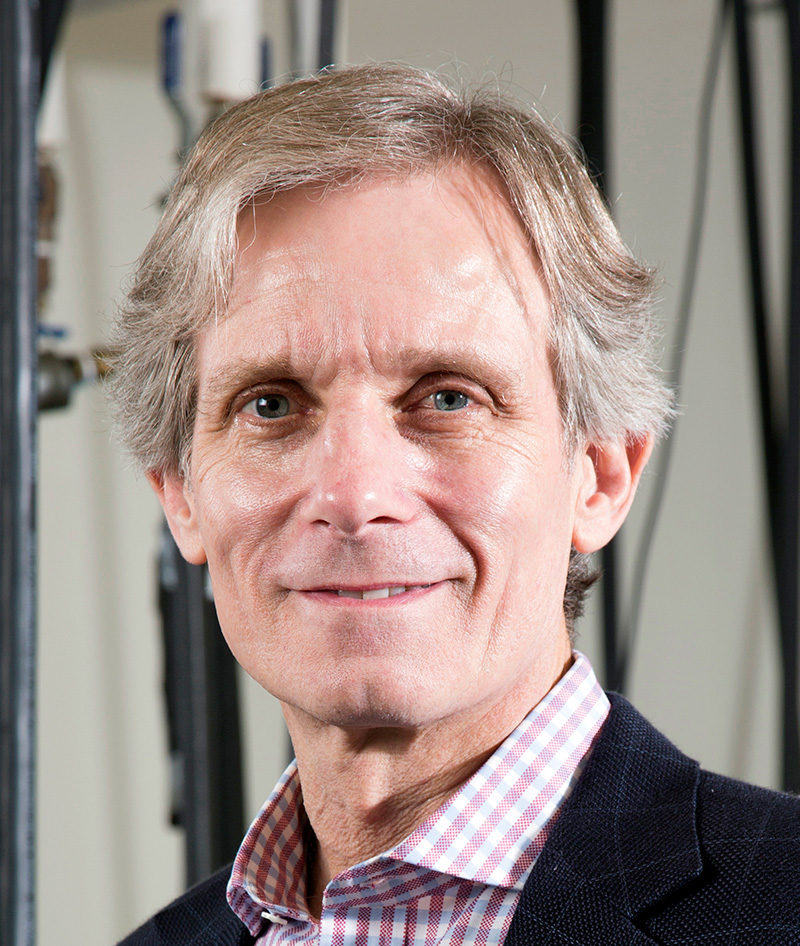
Biography
Shalom J. Wind received his B.A. degree in Physics from Yeshiva University and his M.Phil. and Ph.D. degrees in Physics from Yale University. The topic of his thesis was “Electron quantum interference and transport in ultrasmall metal structures.” He joined IBM’s Thomas J. Watson Research Center in 1987, following his doctoral studies. As a Research Staff Member in the Silicon Technology Department, his work there focused primarily on the fabrication and study of electronically functional nanostructures and nanodevices and on the scaling of silicon transistors to increasingly smaller dimensions. Some highlights include the demonstration of a “compact transistor,” in which all transistor features were scaled to minimal dimensions (50 – 100 nm); creation of single-electron transistors in a semiconductor by lithographic delineation of Coulomb islands (work that was highlighted in the New York Times Business section); advanced scaling of fully integrated CMOS transistors and circuits to 50 nm (achieving record switching performance at that time); hierarchical proximity correction for electron beam lithography; fabrication of 5 nm features by electron beam lithography; and the first demonstration of carbon nanotube transistors that could (a) outperform scaled silicon devices (that work was featured on the front pages of the New York Times and the Wall Street Journal) and (b) display ballistic transport.

In 2003, Wind joined the faculty of Columbia University in the Department of Applied Physics. His research there initially focused on molecular electronic devices as a member of the NSF-funded Center for Electron Transport in Molecular Nanostructures. He also began exploring research opportunities in biology through a collaboration with Prof. Michael Sheetz in Columbia’s Biology Department. This led to the formation of the NIH-funded Nanomedicine Center for Mechanical Biology: Directing the Immune Response, a multi-institution, multi-PI program that sought to apply the tools of semiconductor device processing toward biomedical problems. This foray into biology put Wind’s research group in a unique position: at the interface between the physical sciences and life sciences, where the precision engineering of semiconductor technologies is combined with the exquisite chemical recognition of biomolecules to create new opportunities for probing biomolecular and cellular systems, on the one hand, and for assembling and probing functional nanomaterials, on the other. The ultimate goal was to create new, increasingly complex nanoassemblies where new phenomena and scientific principles emerge from the precise organization of individual molecules/nanostructures into integrated nanosystems.
Some highlights of Professor Wind’s research at Columbia include: conventional and nonconventional techniques for the creation of single-molecule switches, including the integration of carbon nanotube as electrodes for trapping single molecules; DNA-directed assembly of technologically functional nanostructures (carbon nanotubes, semiconducting nanorods, heterogeneous nanoparticles and DNA origami rafts; lithographically directed placement of DNA origami nanostructures; deterministic placement of nitrogen vacancies in diamond for potential quantum computing applications; self-assembly of DNA origami scaffolds that included metallic pathways within their structure; massively parallel observation of DNA hybridization at the single-molecule level; measurement of cellular traction forces; creation arrays of single-protein biding sites, which were used for (a) determination of the minimum geometric requirements for integrin binding in cell adhesion and (b) elucidation of the geometric basis for immune cell signaling (T cell receptor clustering).
As part of his academic responsibilities at Columbia, Professor Wind taught multiple courses in the Applied Physics and Applied Mathematics Department, primarily in the areas of Applied Physics and Materials Science. He also mentored and trained undergraduate and graduate students (M.A. and Ph.D.), as well as pos-docs. Professor Wind procured support for his research, including funding for the advisees) through grants from agencies such as the NSF, NIH, NASA, NYSTAR (Empire State Development’s Division of Science Technology and Innovation), AFOSR, DOE, DOD, BSF (US-Israel Binational Science Foundation) and others.
Dr. Wind has more than 150 peer-reviewed publications, many in high impact journals, and many of which are highly cited. He has lectured around the world and has chaired international conferences on Nanoscience and Nanotechnology. He is known world-wide as a leading authority on nanofabrication and nanodevices.
Dr. Wind retired in 2019. He maintains an appointment at Columbia and is a member of Emeritus Professors in Columbia. His former students and post-docs have positions in both academia and industry in fields ranging from nanoelectronics to biomedical engineering.
